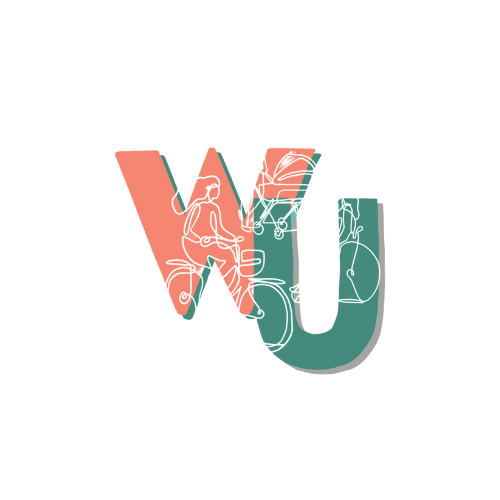Understanding Gender Beyond the Binary
At Women in Urbanism Canada, we focus on the experiences of women and advocate for intersectional feminist interventions that can help make cities more equitable, sustainable, and enjoyable for all.
However, when we focus only on women, whose experiences are we leaving out?
A lot of folks do not fit within the conventional definition of women, with more and more people rejecting the binary social construct of gender. When including these people in our discourse, we want to ensure that they are being included in a way that respects their unique gender identity, expressions, and experiences.
For all of us to gain a better understanding of women and gender diverse folk, here is a brief overview of some definitions that can help us navigate the complexity of gender.
Definitions
Sex
Sex refers to a set of biological attributes in humans and animals. It is primarily associated with physical and physiological features including chromosomes, gene expression, hormone levels and function, and reproductive/sexual anatomy. Sex is usually categorized as female or male, but there is variation in the biological attributes and how they are expressed.
Gender
Gender refers to the socially constructed roles, behaviours, expressions and identities of girls, women, boys, men, and gender diverse people. It influences how people perceive themselves and each other, how they act and interact, and the distribution of power and resources in society. Gender is usually conceptualized as a binary (girl/woman and boy/man) yet there is considerable diversity in how individuals and groups understand, experience, and express it.
Women
All people who identify as women, whether they are cisgender or transgender women.
Cisgender
People whose gender identity matches the sex that they were assigned at birth.
Transgender
A person whose current gender does not align with the sex that they were assigned at birth.
Girl
A child or youth who identifies as a girl whether she is cisgender or transgender.
Gender-Diverse
Refers to individuals who do not identify as exclusively male or exclusively female (for example, individuals who are non-binary or two-spirit).
Non-Binary
Person whose gender identity does not align with a binary understanding of gender such as man or woman. A non-binary person may identify as neither a man nor a woman, both, or anywhere along the gender spectrum.
Two-Spirit
Umbrella term for some Indigenous people who identify as having both a female and male spirit within them or whose gender identity, gender expression, sexual orientation or spiritual identity is not limited by the binary classification of gender as woman or man.
Femme
A term that refers to a queer person whose gender expression is considered to be feminine. It is common for trans and non-binary individuals to use the term to refer to their identity or expression even if they do not identify as lesbian or bisexual women. Femme is also sometimes used as a gender in itself.
Queer
The term ‘queer’ has a complex history. Up until the 80s, it was mostly used as a slur, and then the queer community began reclaiming the term, giving rise to the academic discipline of queer theory. Some people choose not to use an acronym such as LGBT, and instead use the word "queer" as a collective term for all identities which are not heterosexual and/or not cisgender. Queer may also be used for orientations and genders that are difficult to define in more specific terms.
Gender Nuance
There are many issues that relate to women that also directly impact transwomen, girls, non-binary, two-spirit persons, femmes, and genderqueer people.
For example, gender-based violence largely effects women, however, transgender Canadians are more likely to have experienced violence, as well as inappropriate behaviours in public, online, and at work, compared to cisgender people.
Similarly, access to public washrooms harms women, who need to use the washroom more frequently than men due to biological reasons, such as menstruation, and/or cultural reasons, such as needing to remove more clothing. However, many other people that do not identify as women menstruate, requiring sanitary products and water along with access to washroom facilities.
Women are also statistically poorer than men, with white women earning about 80% of white men’s full-time, full year earnings (rates for women of colour are much lower). While this impacts women, studies suggest that LGBTQ2S+ members are more likely to be low-income than non-LGBTQ2S+ counterparts.
Intersectionality
This is why an intersectional feminist lens is so key to our work. Any interventions that we advocate for must also consider the needs of LGBTQ2S+ people, BIPOC, persons with disabilities, young and elderly, people experiencing homelessness, and so on.
While we are named Women in Urbanism Canada, the needs and experiences of transwomen, girls, non-binary, two-spirit persons, femmes, and queer people are core to our mission. We will continue to advocate for folks across the gender spectrum, because it is the only way to make cities better for everyone.
Resources
Gender is continually evolving. We will make ongoing updates to this piece as understanding and terminology related to gender inclusion shift. We will continue to learn, and we hope you will too.
More terms are available on our website:
https://www.womeninurbanism.ca/terms
The Canadian Centre for Gender and Sexual Diversity: https://ccgsd-ccdgs.org/
Transgender Map (Canada Resources): https://www.transgendermap.com/resources/canada/
LGBT Youth Line: https://www.youthline.ca/get-support/links-resources/
Positive Space Network: https://positivespacenetwork.ca/resources/


